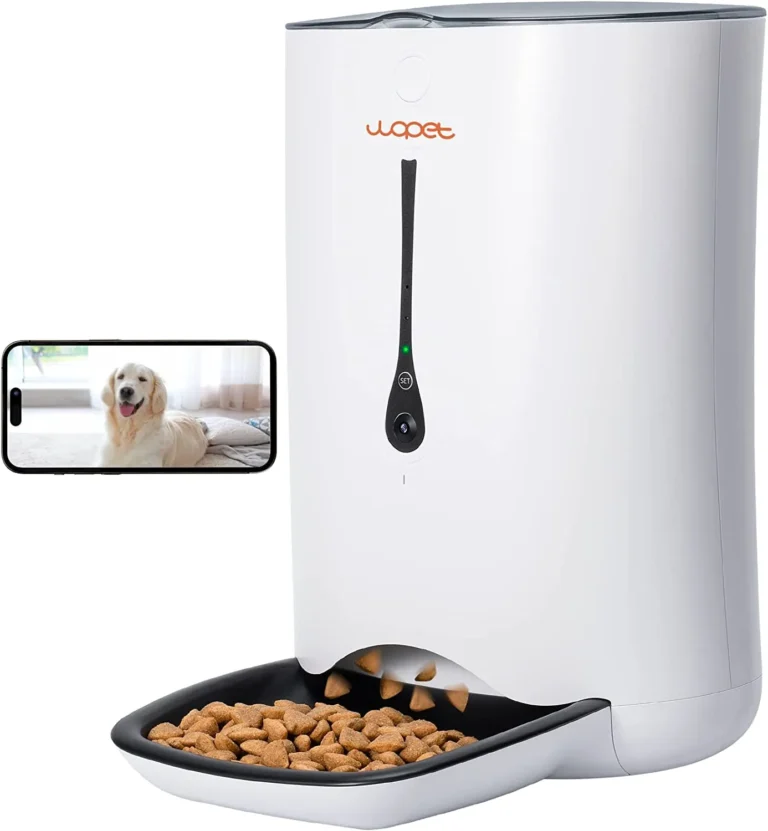Are self-cleaning litter boxes worth the investment?| Best self-cleaning cat litter box
How does a self-cleaning cat litter box work?
What are the benefits of a self-cleaning litter box for multiple cats?
Are Self-Cleaning Litter Boxes Worth the Investment?
If you’re a cat owner, you know that scooping out the litter box is one of the less glamorous aspects of pet care. It’s time-consuming, can be messy, and let’s face it—nobody enjoys it.

Enter the self-cleaning litter box, a device that promises to take over this daily chore for you. But are these gadgets worth the investment? Let’s break down the pros and cons to help you decide if they’re the right fit for you and your feline friend.
The Appeal of Self-Cleaning Litter Boxes
The primary selling point of a self-cleaning litter box is convenience. These devices automatically scoop and sift through the litter, removing waste and storing it in a compartment that you empty periodically.
This promises to reduce the time you spend dealing with your cat’s bathroom habits and minimize the contact you have with litter and waste. Sounds great, right? But there’s more to consider before deciding if it’s worth the price tag.
Time-Saving Convenience
Without a doubt, self-cleaning litter boxes offer a significant time-saving benefit. Traditional litter boxes require daily scooping to keep them clean and odor-free. With a self-cleaning model, you can reduce this task to simply emptying a waste drawer every few days. For people with busy schedules, this automation can be a game-changer.
For multi-cat households, the convenience is even more pronounced. More cats mean more waste, and keeping up with scooping can feel like a never-ending chore. Self-cleaning litter boxes are designed to handle higher volumes of waste, making them a potential lifesaver in homes with multiple pets.
Odor Control and Hygiene
Self-cleaning litter boxes often come with enhanced odor control features. Many models have sealed waste bins or compartments, preventing smells from spreading in your home. Some even include carbon filters or automatic air fresheners to neutralize odors.
Beyond convenience, this level of odor control can improve hygiene. Since the waste is quickly removed from the litter box, bacteria and smells have less time to build up. This helps keep your home smelling fresh and reduces the risk of your cat avoiding the litter box due to a bad odor.
Consistent Cleanliness for Your Cat
Cats are notoriously finicky about cleanliness. If the litter box isn’t up to their standards, some cats will refuse to use it, leading to accidents in other areas of your home. A self-cleaning litter box ensures that the box is consistently clean after each use, which is often more acceptable to cats than a box that’s scooped once or twice a day.
This can also be beneficial if you’re away from home for extended periods. Whether you’re working long hours or out for the weekend, a self-cleaning litter box helps maintain a fresh environment for your cat in your absence.
The Drawbacks of Self-Cleaning Litter Boxes
While the benefits are clear, self-cleaning litter boxes aren’t without their drawbacks. The most obvious downside is the price. A self-cleaning litter box can cost anywhere from $100 to $500 or more, depending on the model and features.
For some pet owners, this upfront cost may feel too steep, especially when compared to the low cost of a traditional litter box.
In addition to the purchase price, you’ll also need to consider the ongoing costs. Some self-cleaning litter boxes require specialized accessories, such as branded litter, waste receptacles, or carbon filters, which can add up over time. These ongoing costs are something to factor into your budget before making a decision.
Maintenance and Troubleshooting
Contrary to what some might expect, self-cleaning litter boxes are not entirely maintenance-free. While they handle the dirty work of scooping, you’ll still need to clean the box regularly to ensure that the sensors and mechanisms don’t get clogged or malfunction.
Additionally, you’ll have to empty the waste compartment and, depending on the model, replace filters or liners. It’s also worth noting that the electronics involved in these boxes can occasionally malfunction.
Sensors may fail to detect your cat, or the rake system might jam. While most of these issues can be fixed by following the manufacturer’s troubleshooting guide, it’s something to keep in mind if you’re not particularly tech-savvy or if you’re hoping for a truly hands-off experience.
Potential Noise Disruption
Another common complaint about self-cleaning litter boxes is the noise. Some models can be quite loud when the cleaning cycle is activated, which might disturb your cat, especially in the beginning.
While most cats adjust over time, this initial disruption could be a challenge, particularly for timid or skittish cats. If you’re sensitive to noise, the sound of the motor running could also become a mild annoyance, especially if you place the litter box in a frequently used area of your home.
Space Requirements
Most self-cleaning litter boxes are bulkier than traditional models. The added electronics, mechanisms, and waste compartments require more space, which may be a problem for those living in smaller homes or apartments.
You’ll need to ensure that you have adequate space for the litter box and easy access to power if you opt for a plug-in model.
Transitioning Your Cat to a Self-Cleaning Litter Box
One thing many cat owners worry about is how their feline friends will react to a new type of litter box. Some cats may be cautious or even scared of the mechanical noise and movement of a self-cleaning litter box.
If your cat is particularly sensitive to changes in their environment, the transition to a self-cleaning box may require patience. To make the process easier, it’s recommended to introduce the self-cleaning box gradually.
Place it alongside your cat’s old litter box and let them get used to the sight and sound of it without immediately switching over. You might also start by using the self-cleaning box in manual mode before activating the automatic features.
Who Benefits the Most from a Self-Cleaning Litter Box?
While self-cleaning litter boxes can be a worthwhile investment for some, they may not be ideal for everyone. The people who tend to benefit the most include:
- Busy professionals who don’t have time for daily scooping.
- Multi-cat households where regular scooping becomes overwhelming.
- Pet owners with physical limitations, such as back pain or arthritis, that make it difficult to bend down and clean the litter box regularly.
- Cat owners who travel frequently or are away from home for extended periods.
What are the benefits of a self-cleaning litter box for multiple cats?
Owning multiple cats means double—or sometimes triple—the love, but it also means double the work when it comes to cleaning the litter box. Managing waste for more than one cat can quickly become overwhelming with a traditional litter box.
This is where a self-cleaning litter box can be a game-changer. These devices offer several benefits for multi-cat households, helping to make pet care easier and more efficient. we’ll explore the key benefits of a self-cleaning litter box for homes with multiple cats. Read more
Is a Self-Cleaning Litter Box Right for You?
Ultimately, whether a self-cleaning litter box is worth the investment depends on your lifestyle, budget, and how much you value convenience. If you’re tired of daily scooping, have multiple cats, or want to improve odor control in your home, the time and effort saved may well justify the cost.
However, if you’re on a tight budget or don’t mind the daily maintenance of a regular litter box, it might not be necessary to invest in an automated solution. It’s also worth considering that self-cleaning boxes aren’t completely hassle-free—you’ll still need to perform occasional maintenance, troubleshoot potential issues, and cover ongoing costs like filters or receptacles.
FAQs
- How often do I need to empty the waste compartment in a self-cleaning litter box?
- Depending on the model and the number of cats, you may need to empty the waste bin every few days to a week.
- Are self-cleaning litter boxes safe for cats?
- Yes, most self-cleaning litter boxes use sensors to detect when your cat is inside and won’t activate until the cat leaves the box.
- Can self-cleaning litter boxes be used by multiple cats?
- Yes, many models are suitable for multi-cat households, but you may need to empty the waste bin more frequently.
- Do self-cleaning litter boxes eliminate odors completely?
- While they significantly reduce odors by quickly removing waste, they won’t eliminate smells entirely without proper maintenance.
- Are there any maintenance tasks for self-cleaning litter boxes?
- Yes, you’ll need to periodically clean the box, empty the waste compartment, and occasionally replace filters or liners depending on the model.
Conclusion
Self-cleaning litter boxes can offer an appealing blend of convenience, cleanliness, and odor control for busy or multi-cat households. They reduce the need for daily scooping, help maintain a consistently clean environment for your cat, and can improve hygiene in your home.
However, the higher initial investment, ongoing costs, and occasional maintenance required may be deterrents for some pet owners.
If you value convenience and can afford the upfront and ongoing expenses, a self-cleaning litter box could be a worthy investment. But if you’re content with a traditional litter box and don’t mind the manual labor, sticking with what you know might be the better option.




